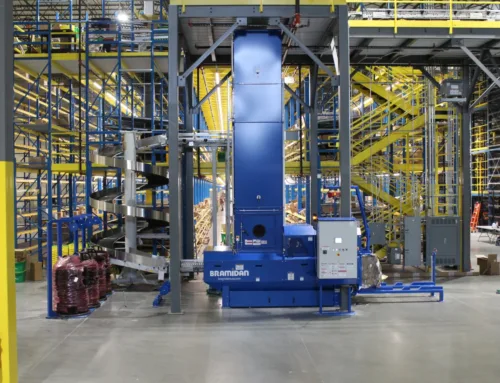
The world of retail is ever-evolving, with trends coming and going faster than ever. One significant trend that has gained traction over the years is overstock liquidation. Overstock items are products that retailers couldn’t sell in their prime season, leading to surplus inventory. These products find a second life in the liquidation market, where they are sold at a fraction of the original price. This article delves into how overstock shapes the liquidation market dynamics and its impact on wholesale prices and overstock sales.
Understanding Overstock Liquidation
Overstock liquidation refers to the process where retailers sell their excess inventory to liquidators, who then sell these items to consumers or other businesses at significantly reduced prices. But why do retailers opt for liquidation?

Reasons for Overstock
Several factors contribute to overstock situations:
- Overproduction: Manufacturers often produce more goods than the market demands.
- Seasonal Trends: Items tied to specific seasons, holidays, or trends may become obsolete once the period passes.
- Forecast Errors: Misjudging market demand can lead to excess inventory.
- Returned Goods: Products that customers return can add to overstock.
Overproduction
Overproduction occurs when manufacturers produce more items than retailers can sell. This often happens due to overestimation of market demand. Companies might anticipate higher sales and thus create more products to meet this expected demand. However, when sales fall short, the unsold goods accumulate, leading to overstock situations.
Seasonal Trends
Products tied to particular seasons or holidays can quickly become obsolete. For instance, winter clothing has limited appeal once spring arrives. Retailers often face overstock challenges with such seasonal items, as they struggle to sell these products outside their peak times. This leads to significant discounts or liquidation to clear out the unsold inventory.
Forecast Errors
Forecasting market demand is not an exact science. Even with sophisticated tools and data, retailers can misjudge consumer interest. When this happens, they end up with more stock than they can sell. Such forecasting errors necessitate liquidation to manage the surplus inventory effectively.
Returned Goods
Returned goods contribute significantly to overstock. Items that don’t meet customer expectations or have minor defects are often returned. Retailers cannot always resell these products at full price, thus they become part of the overstock inventory needing liquidation.
Benefits of Liquidation for Retailers
Liquidation offers multiple advantages for retailers:
- Inventory Clearance: It helps clear out old stock, making room for new arrivals.
- Cash Flow: Liquidating excess inventory can quickly generate cash flow.
- Reduced Storage Costs: Holding onto unsold items can be costly; liquidation reduces these expenses.
Inventory Clearance
Clearing out old stock is a primary benefit of liquidation. Overstock items take up valuable storage space, which could otherwise be used for new merchandise. By liquidating these items, retailers can efficiently manage their inventory and ensure that their shelves are stocked with the latest products, which are more likely to attract customers.
Cash Flow
Generating immediate cash flow is another significant advantage. Overstock items represent tied-up capital. By selling these items, even at a reduced price, retailers can convert stagnant inventory into liquid assets. This quick influx of cash can be crucial for maintaining operational stability and funding new purchases.
Reduced Storage Costs
Storage costs can add up quickly, especially for large inventories. Unsold items require space, and maintaining this space comes with expenses such as rent, utilities, and security. Liquidation helps to mitigate these costs by reducing the volume of inventory that needs to be stored, thus cutting down on overhead expenses.

Dynamics of the Liquidation Market
The liquidation market operates on unique dynamics that distinguish it from conventional retail markets.
Pricing Mechanisms
Wholesale prices in the liquidation market are markedly different from traditional retail prices. Liquidators purchase overstock at heavily discounted rates, sometimes at pennies on the dollar. This cost advantage allows them to offer products at prices that are appealing to bargain hunters and small retailers.
Discounted Purchase Prices
Liquidators acquire overstock items at significantly reduced prices. These discounts can be as steep as 90% off the original retail price. This drastic reduction in cost enables liquidators to resell the products at a profit while still offering substantial savings to buyers. The heavily discounted purchase price is a key factor that drives the liquidation market.
Competitive Resale Pricing
The ability to buy low allows liquidators to sell low. Products in the liquidation market are often priced much lower than their original retail value. This competitive pricing attracts a wide range of buyers, from individual consumers looking for deals to small businesses seeking inventory. The appeal of getting quality products at a fraction of the cost fuels the demand in the liquidation market.
Influence on Traditional Retail Prices
The pricing mechanisms in the liquidation market can influence traditional retail prices. As consumers become accustomed to finding bargains in liquidation sales, they may be less willing to pay full price in regular retail settings. This shift in consumer behavior can pressure traditional retailers to adjust their pricing strategies to remain competitive.
Market Participants
Key players in the liquidation market include:
- Retailers: The primary source of overstock items.
- Liquidators: Companies specializing in buying and reselling excess inventory.
- Resellers: Small businesses or individuals who purchase from liquidators to sell to end consumers.
- Consumers: The final buyers who enjoy significant discounts.
Retailers
Retailers are the starting point of the overstock liquidation process. They are responsible for identifying surplus inventory and deciding to liquidate it. These decisions are often driven by the need to make room for new stock or to recover some of the investment tied up in unsold goods.
Liquidators
Liquidators act as intermediaries between retailers and end consumers. They purchase overstock items in bulk from retailers at discounted prices. These items are then sorted, categorized, and often repackaged before being sold to resellers or directly to consumers. Liquidators play a crucial role in the efficient distribution of surplus inventory.
Resellers
Resellers buy overstock items from liquidators and sell them to end consumers. This group includes small businesses, online sellers, and flea market vendors. Resellers add value by curating selections, offering personalized service, and sometimes refurbishing items. Their role is essential in bringing overstock items to a broader audience.
Consumers
Consumers are the final link in the liquidation chain. They benefit from the significant discounts available on overstock items. These buyers range from bargain hunters to those looking for specific products at lower prices. The consumer’s willingness to purchase overstock items sustains the entire liquidation market.
Online Liquidation Platforms
The rise of e-commerce has transformed how overstock items are liquidated. Online platforms like Liquidation.com and B-Stock Solutions have made it easier for retailers to offload excess inventory and for buyers to access discounted goods.
Accessibility and Convenience
Online liquidation platforms offer unparalleled accessibility and convenience. Retailers can quickly list their overstock items for sale, reaching a global audience without the need for physical storefronts. Buyers, on the other hand, can browse and purchase discounted goods from the comfort of their homes, making the process seamless and efficient.
Broader Reach
The internet’s global reach allows online liquidation platforms to connect sellers and buyers from different regions. This expanded market increases the chances of selling overstock items quickly and at better prices. Retailers can tap into international demand, while buyers gain access to a wider variety of products.
Enhanced Transparency
Online platforms often provide detailed descriptions, images, and customer reviews, enhancing transparency in the liquidation process. Buyers can make informed decisions based on accurate information about the products. This transparency helps build trust between sellers and buyers, fostering long-term relationships and repeat business.

Impact on Wholesale Prices
Overstock liquidation has a profound impact on wholesale prices. Here’s how:
Competitive Pricing
The availability of overstock items at reduced prices forces traditional wholesalers to reevaluate their pricing strategies. To remain competitive, they may need to lower their prices or offer added value to their customers.
Price Adjustments
Traditional wholesalers may need to adjust their prices to compete with the liquidation market. The presence of lower-priced overstock items can make it challenging for wholesalers to sell at their usual rates. To stay competitive, they might reduce their prices or offer special deals to attract customers.
Added Value Offerings
In response to competitive pressures, wholesalers may offer added value to their customers. This could include bundled products, extended warranties, or enhanced customer service. These value-added offerings help differentiate traditional wholesalers from the liquidation market and attract customers willing to pay a premium for additional benefits.
Increased Bargain Hunting
The availability of discounted overstock items encourages bargain hunting among consumers. As more buyers seek out deals, traditional wholesalers face increased pressure to offer competitive prices. This shift in consumer behavior can lead to a broader trend of price sensitivity in the wholesale market.
Market Equilibrium
Liquidation helps balance supply and demand in the market. By clearing out excess inventory, it prevents a glut of products that could depress prices further.
Supply Chain Efficiency
Efficient liquidation contributes to a more balanced supply chain. Overstock items that would otherwise clog the supply chain are quickly moved out, freeing up space for new inventory. This balance helps stabilize prices by preventing an oversupply of goods in the market.
Stabilized Pricing
By removing excess inventory, liquidation helps stabilize prices in the retail and wholesale markets. Without liquidation, unsold products would accumulate, leading to price drops as retailers and wholesalers try to clear their stock. The liquidation process ensures that prices remain more consistent by managing surplus inventory effectively.
Demand Stimulation
Liquidation can stimulate demand by making products more affordable. Lower prices attract budget-conscious consumers who might not have purchased at full price. This increased demand helps move inventory faster, contributing to a healthier balance between supply and demand.
Price Perception
Consumers become accustomed to finding high-quality goods at lower prices in the liquidation market. This shift in price perception can put pressure on traditional retailers and wholesalers to adjust their pricing models.
Changing Consumer Expectations
As consumers find more bargains in the liquidation market, their expectations for pricing change. They become more price-sensitive and less willing to pay full retail prices. This shift in expectations forces traditional retailers and wholesalers to reconsider their pricing strategies to meet consumer demands.
Erosion of Brand Value
Frequent liquidation of branded goods can erode perceived brand value. When high-quality brands are consistently available at discounted prices, consumers may question their worth. This erosion can compel brands to manage their overstock more carefully to maintain their premium image.
Price Strategy Adaptation
Traditional retailers and wholesalers may need to adapt their pricing strategies to align with consumer perceptions. This could involve implementing more dynamic pricing models, offering regular promotions, or creating exclusive product lines that justify higher prices. Adapting to changing price perceptions is crucial for maintaining competitiveness in the market.
Strategies for Successful Overstock Sales
Retailers and liquidators must employ effective strategies to maximize the benefits of overstock sales.
Effective Marketing
Marketing plays a crucial role in driving overstock sales. Retailers and liquidators must highlight the value proposition of their discounted goods to attract buyers. Utilizing social media, email marketing, and online advertising can significantly boost visibility and sales.
Social Media Campaigns
Social media platforms offer a powerful way to reach potential buyers. Retailers and liquidators can create engaging posts, run targeted ads, and use influencers to promote their overstock items. Effective social media campaigns can generate buzz and drive traffic to online or physical sales events.
Email Marketing
Email marketing remains a highly effective tool for promoting overstock sales. Retailers and liquidators can build email lists and send targeted campaigns highlighting special offers, new arrivals, and exclusive discounts. Personalized email content can engage recipients and encourage them to make purchases.
Online Advertising
Online advertising, including pay-per-click (PPC) and display ads, can significantly boost visibility for overstock items. Retailers and liquidators can target specific demographics, interests, and behaviors to reach the right audience. Well-crafted ad campaigns can drive traffic to e-commerce sites and increase sales.
Quality Assurance
One of the challenges in the liquidation market is maintaining consumer trust. Ensuring the quality and authenticity of overstock items is paramount. Retailers should provide accurate descriptions and transparent return policies to build credibility.
Detailed Product Descriptions
Accurate and detailed product descriptions are essential for building trust. Retailers should provide comprehensive information about the condition, features, and any potential defects of overstock items. Clear descriptions help set customer expectations and reduce the likelihood of returns.
Transparent Return Policies
Transparent and fair return policies are crucial in the liquidation market. Retailers should clearly outline the terms and conditions for returns, including time frames and any associated fees. This not only builds trust with consumers but also helps manage the risk of returns.
Verified Authenticity
One of the biggest concerns for consumers when purchasing overstock items is authenticity. Retailers should work with trusted suppliers or utilize authentication services to ensure that their products are genuine. This can be highlighted in product descriptions, assuring customers that they are receiving authentic goods.
Customer Reviews
Including customer reviews on product pages is another effective way to build trust with consumers. These reviews provide social proof and can help alleviate any doubts or concerns about purchasing overstock items. Retailers should also encourage customers to leave honest feedback, as this can help improve the overall shopping experience.
In conclusion
Building consumer trust is crucial in the liquidation industry. By providing transparent information, utilizing authentication services, and showcasing customer reviews, retailers can establish their credibility and attract more customers. Ultimately, this will lead to increased sales and a positive reputation in the market. So don’t hesitate to start implementing these strategies in your business today!
Share This Story, Choose Your Platform!
Get In Touch
Phone: (847) 722-6942
Email: sales@end2endlogix.com
Web: end2endlogix.com


